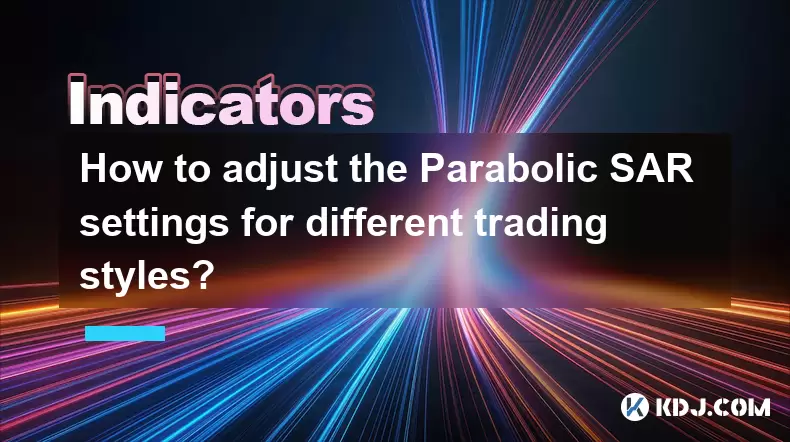-
 Bitcoin
Bitcoin $114800
-0.70% -
 Ethereum
Ethereum $4740
0.44% -
 XRP
XRP $3.018
-0.53% -
 Tether USDt
Tether USDt $0.9998
0.02% -
 BNB
BNB $863.0
-2.82% -
 Solana
Solana $205.2
1.19% -
 USDC
USDC $0.9999
0.00% -
 Dogecoin
Dogecoin $0.2303
-2.43% -
 TRON
TRON $0.3651
1.10% -
 Cardano
Cardano $0.8937
-2.19% -
 Chainlink
Chainlink $25.42
-0.96% -
 Hyperliquid
Hyperliquid $43.50
-0.67% -
 Sui
Sui $3.626
-2.57% -
 Stellar
Stellar $0.4055
-1.60% -
 Ethena USDe
Ethena USDe $1.000
0.01% -
 Bitcoin Cash
Bitcoin Cash $594.8
1.30% -
 Avalanche
Avalanche $25.04
-3.00% -
 Hedera
Hedera $0.2452
-1.68% -
 Litecoin
Litecoin $119.1
-1.96% -
 UNUS SED LEO
UNUS SED LEO $9.596
0.24% -
 Toncoin
Toncoin $3.331
-0.83% -
 Shiba Inu
Shiba Inu $0.00001277
-3.18% -
 Uniswap
Uniswap $10.94
-2.43% -
 Polkadot
Polkadot $4.044
-2.07% -
 Dai
Dai $0.0000
0.01% -
 Bitget Token
Bitget Token $4.670
-1.72% -
 Cronos
Cronos $0.1568
1.20% -
 Aave
Aave $346.1
-1.00% -
 Monero
Monero $269.5
0.15% -
 Ethena
Ethena $0.6950
-6.51%
How to adjust the Parabolic SAR settings for different trading styles?
The Parabolic SAR is a trend-reversal indicator that uses dots above or below price to signal downtrends or uptrends, adjustable for scalping, day, swing, and position trading by modifying its step and max values.
Aug 12, 2025 at 04:35 am

Understanding the Parabolic SAR Indicator
The Parabolic SAR (Stop and Reverse) is a technical analysis tool developed by J. Welles Wilder Jr. that helps traders identify potential reversals in price movement. It appears as a series of dots placed either above or below the price candles on a chart. When the dots are below the price, it signals an uptrend, and when they are above, it indicates a downtrend. The default settings for the Parabolic SAR are a step (acceleration factor) of 0.02 and a maximum value of 0.20. These values control how quickly the SAR responds to price changes. Adjusting these settings allows traders to customize the indicator for different market conditions and trading styles. Misunderstanding the base mechanics can lead to incorrect interpretation, so grasping how the SAR functions is essential before making modifications.
Adjusting SAR Settings for Scalping
Scalpers aim to capture small price movements over very short timeframes, often holding positions for seconds to minutes. To make the Parabolic SAR more responsive for such a fast-paced strategy, increasing the acceleration factor (step) and reducing the maximum value can be beneficial. A higher step value, such as 0.04, causes the SAR to react more quickly to price changes, allowing earlier entry and exit signals. However, setting the maximum too high, like 0.30, may lead to excessive whipsaws due to over-sensitivity. Recommended settings for scalping include:
- Set the step to 0.04
- Limit the maximum to 0.25
- Apply the indicator on 1-minute or 5-minute charts
- Combine with volume indicators or RSI to confirm signals
These adjustments make the SAR dots appear more frequently, enabling faster trade decisions. Traders should monitor for clusters of SAR dots indicating strong momentum, while isolated dots may suggest false signals.
Optimizing SAR for Day Trading
Day traders hold positions within a single trading session and benefit from a balanced sensitivity level. The goal is to capture intraday trends without being whipsawed by minor price fluctuations. Using the default SAR settings (0.02 step, 0.20 max) may be too slow for active day trading. A moderate adjustment improves responsiveness while maintaining reliability. Consider the following configuration:
- Increase the step to 0.03
- Keep the maximum at 0.20
- Apply on 15-minute or 1-hour charts
- Use alongside moving averages (e.g., 20 EMA) for trend confirmation
This setup allows the SAR to accelerate steadily as the trend continues, generating timely reversal signals. For example, when the price moves upward and the SAR dots remain beneath, the rising acceleration factor tightens the stop-loss level, helping lock in profits. Traders should avoid using SAR in choppy or sideways markets unless combined with a volatility filter like Bollinger Bands.
Configuring SAR for Swing Trading
Swing traders hold positions for several days to weeks, aiming to capture medium-term price swings. For this style, a less sensitive SAR is preferred to avoid premature exits during temporary retracements. Lowering the step value reduces the rate at which the SAR accelerates, making it more stable. Suitable settings include:
- Reduce the step to 0.015
- Increase the maximum to 0.18
- Apply on 4-hour or daily charts
- Pair with support/resistance levels and Fibonacci retracements
With these parameters, the SAR adjusts slowly, staying in place during minor pullbacks. This prevents false reversal signals during healthy corrections within a larger trend. For instance, in an uptrend, the SAR will remain below price for an extended period, only flipping above if a significant reversal occurs. This delayed response suits the patience required in swing trading.
Customizing SAR for Position Trading
Position traders adopt a long-term view, often holding assets for weeks or months. They require an indicator that filters out noise and aligns with macro trends. The Parabolic SAR can be adapted by minimizing the acceleration factor to prevent early reversals. A conservative setup includes:
- Set the step to 0.01
- Set the maximum to 0.15
- Use on daily or weekly charts
- Confirm signals with fundamental analysis or on-chain data (in crypto)
These settings make the SAR extremely slow to reverse, ensuring that only major trend changes trigger a signal. For example, in a strong bull market, the SAR dots will stay beneath the price for weeks, even during sharp corrections. This stability helps traders avoid emotional exits. However, the trade-off is delayed signal generation, which may result in giving back more profit before exiting.
Practical Steps to Modify SAR in Trading Platforms
Most trading platforms allow customization of the Parabolic SAR. Below are step-by-step instructions for adjusting the settings in popular environments:
- Open your charting platform (e.g., TradingView, MetaTrader 4/5)
- Click on the "Indicators" button or search bar
- Type "Parabolic SAR" and select it
- Click on the settings (gear) icon next to the indicator name
- Locate the "Step" and "Maximum" input fields
- Enter your desired values (e.g., 0.03 for step, 0.20 for max)
- Click "OK" to apply
After applying, observe how the SAR dots shift in relation to price. Test the new settings on historical data using the bar replay or backtest feature to assess performance. Save the configuration as a template for future use.
Frequently Asked Questions
Can I use different SAR settings for different cryptocurrencies?
Yes. Highly volatile assets like Dogecoin or Shiba Inu may require a higher step (e.g., 0.04) to keep up with rapid price swings. In contrast, more stable coins like Bitcoin or Ethereum perform better with moderate settings (e.g., 0.02–0.03) to avoid false signals during consolidation phases.
What happens if I set the SAR step too high?
An excessively high step, such as 0.06, causes the SAR to reverse too frequently, especially in ranging markets. This leads to whipsaws, where the indicator generates multiple false reversal signals, increasing the risk of losing trades.
Is the Parabolic SAR effective in sideways markets?
No. The SAR performs poorly in choppy or sideways conditions because it assumes a trending market. In such scenarios, the dots flip above and below price rapidly, creating confusion. It is advisable to disable SAR or combine it with a trend filter like ADX (Average Directional Index) above 25.
How do I know which SAR setting is best for my strategy?
Backtest multiple configurations on historical data using your preferred timeframe and asset. Compare metrics like win rate, average profit per trade, and maximum drawdown. The optimal setting balances responsiveness and reliability for your specific entry and exit rules.
Disclaimer:info@kdj.com
The information provided is not trading advice. kdj.com does not assume any responsibility for any investments made based on the information provided in this article. Cryptocurrencies are highly volatile and it is highly recommended that you invest with caution after thorough research!
If you believe that the content used on this website infringes your copyright, please contact us immediately (info@kdj.com) and we will delete it promptly.
- Crypto Crossroads: Dogecoin, Stellar, and the Search for 2025's Top Coin
- 2025-08-24 19:25:32
- Bitcoin Price Swings, BTC News & Remittix: What's Hot Now?
- 2025-08-24 18:45:35
- Cryptos, Market Cap, 2025 Potential: Spotting the Next Big Thing
- 2025-08-24 16:45:35
- Shiba Inu vs. Layer Brett: Price Prediction and the Meme Coin Evolution
- 2025-08-24 17:05:29
- Dogecoin Price Prediction: Will DOGE Bark or Bite?
- 2025-08-24 17:45:26
- XRP Price: Analyst Prediction of $7-$8 in Few Weeks?
- 2025-08-24 17:45:26
Related knowledge

What does it mean when the +DI and -DI cross frequently in the DMI indicator but the ADX is flattening?
Aug 11,2025 at 03:15am
Understanding the DMI Indicator ComponentsThe Directional Movement Index (DMI) is a technical analysis tool composed of three lines: the +DI (Positive...

What does the sudden appearance of a "dark cloud cover" candlestick pattern during an uptrend indicate?
Aug 13,2025 at 11:35am
Understanding the 'Dark Cloud Cover' Candlestick PatternThe dark cloud cover is a bearish reversal pattern in technical analysis that typically appear...

What does it mean when the moving average, MACD, and RSI all send buy signals simultaneously?
Aug 11,2025 at 01:42pm
Understanding the Convergence of Technical IndicatorsWhen the moving average, MACD, and RSI all generate buy signals at the same time, traders interpr...

What does it mean when both the KDJ indicator and the RSI show overbought signals simultaneously?
Aug 13,2025 at 11:35am
Understanding the KDJ Indicator in Cryptocurrency TradingThe KDJ indicator is a momentum oscillator derived from the Stochastic Oscillator, widely use...

What does it mean when the price is trading above the SAR indicator but the red dots are densely packed?
Aug 09,2025 at 11:49pm
Understanding the SAR Indicator and Its Visual SignalsThe SAR (Parabolic Stop and Reverse) indicator is a technical analysis tool used primarily to de...

What does it mean when the candlestick chart forms a "Morning Star" but trading volume is sluggish?
Aug 12,2025 at 06:28pm
Understanding the Morning Star Candlestick PatternThe Morning Star is a three-candle bullish reversal pattern commonly observed in cryptocurrency pric...

What does it mean when the +DI and -DI cross frequently in the DMI indicator but the ADX is flattening?
Aug 11,2025 at 03:15am
Understanding the DMI Indicator ComponentsThe Directional Movement Index (DMI) is a technical analysis tool composed of three lines: the +DI (Positive...

What does the sudden appearance of a "dark cloud cover" candlestick pattern during an uptrend indicate?
Aug 13,2025 at 11:35am
Understanding the 'Dark Cloud Cover' Candlestick PatternThe dark cloud cover is a bearish reversal pattern in technical analysis that typically appear...

What does it mean when the moving average, MACD, and RSI all send buy signals simultaneously?
Aug 11,2025 at 01:42pm
Understanding the Convergence of Technical IndicatorsWhen the moving average, MACD, and RSI all generate buy signals at the same time, traders interpr...

What does it mean when both the KDJ indicator and the RSI show overbought signals simultaneously?
Aug 13,2025 at 11:35am
Understanding the KDJ Indicator in Cryptocurrency TradingThe KDJ indicator is a momentum oscillator derived from the Stochastic Oscillator, widely use...

What does it mean when the price is trading above the SAR indicator but the red dots are densely packed?
Aug 09,2025 at 11:49pm
Understanding the SAR Indicator and Its Visual SignalsThe SAR (Parabolic Stop and Reverse) indicator is a technical analysis tool used primarily to de...

What does it mean when the candlestick chart forms a "Morning Star" but trading volume is sluggish?
Aug 12,2025 at 06:28pm
Understanding the Morning Star Candlestick PatternThe Morning Star is a three-candle bullish reversal pattern commonly observed in cryptocurrency pric...
See all articles

























































































